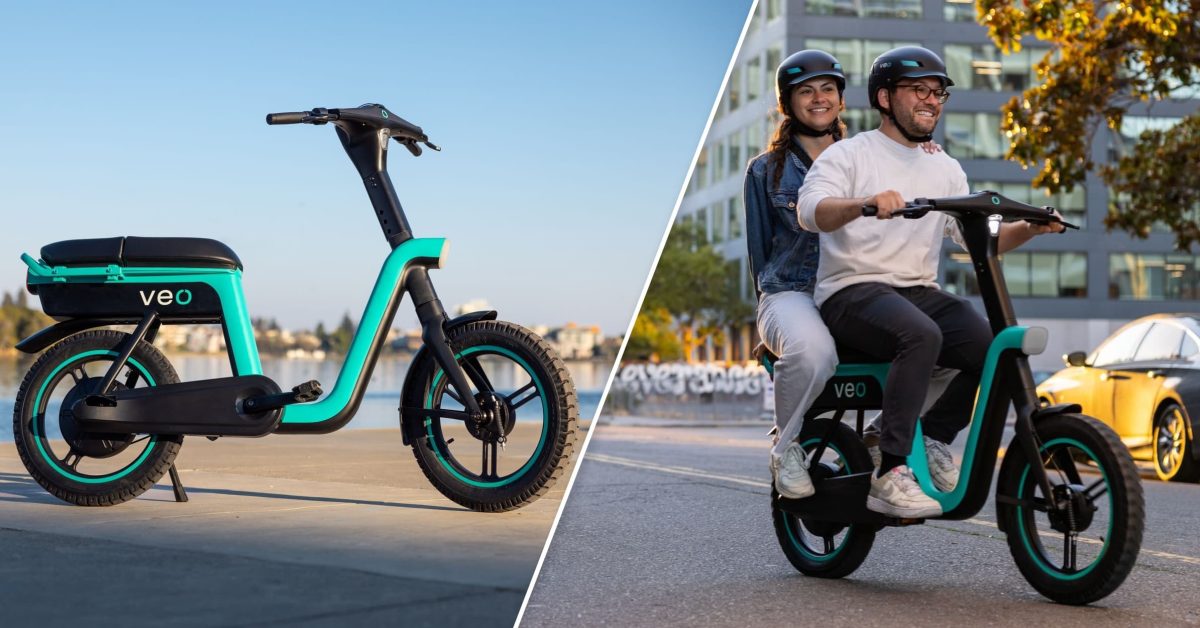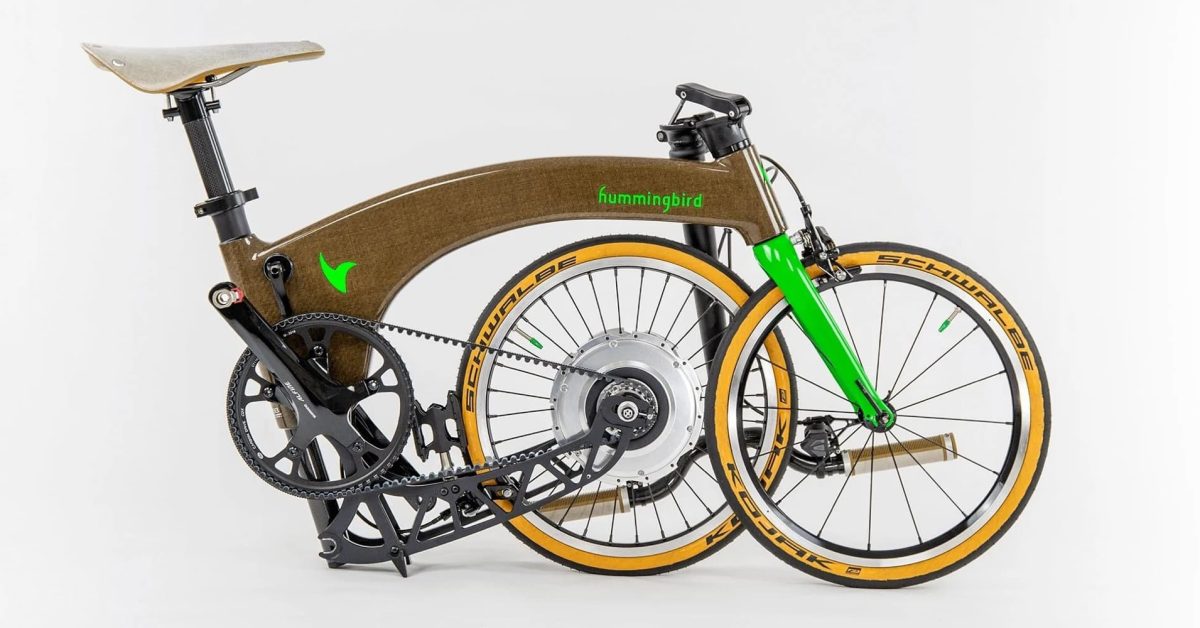[ad_1]
Veo, which touts itself as the first profitable shared micromobility company, has just unveiled its latest light electric vehicle known as the Apollo. But unlike typical e-scooters or e-bikes, this one isn’t just a two-wheeler. It’s also a two-seater.
The Apollo (not to be confused with Canada’s premium electric scooter maker Apollo), is a class 2 electric bike designed for city commuters.
Unlike many shared mobility operators that use third-party electric bikes and e-scooters, Veo designs its vehicles in-house. It’s a strategy that the company has employed since as early as 2017. That means it worked to build the Apollo e-bike from the ground up.
Featuring a pair of seats, the 750W Apollo can be used either for transporting a passenger on back or for hauling more cargo than you’d fit on a typical shared e-bike or e-scooter found on most street corners. With 400 pounds (181 kg) of cargo capacity, the bike is certainly built to handle the extra weight.
That dual purpose design is meant to increase the e-bike’s utility, giving it a better chance of displacing more car trips by providing a functional alternative that isn’t limited to a singe rider with a backpack’s worth of belongings.

Cofounder and CEO of Veo Candice Xie explained further:
As the micromobility industry continues to grow, we must expand our vehicle offerings to address unmet market demands. The Apollo was developed in direct response to insights from rider surveys, feedback from municipalities, and global research that indicates the immense need for safe tandem riding and cargo hauling. By opening up micromobility to new riders and new trip types, we can reduce car dependency and help cities advance their ambitious climate goals.
Most shared electric bike operators use class 1 e-bikes that lack throttles. Instead, the motor is engaged by the rider’s pedaling action, meaning that the user still has to supply some of the work. But throttle-controlled e-bikes can be operated more like a motorbike, with the pedals used largely as static foot rests.
The Veo Apollo is a class 2 e-bike and thus sports that throttle, which the company positions as a great way to help on hills. In practice, it’s likely to be used on more than just hills.
In fact, Veo’s own shared micromobility data shows just how much more popular throttle-controlled e-bikes are. The company has both throttle-controlled and pedal-assisted e-bikes in its lineup already, though both sport just a single seat. Veo says that its throttle-controlled e-bikes see 4x as many rentals as its purely pedal-assisted e-bikes.
It should be noted that the throttle-controlled e-bikes also have pedal-assist functionality, and riders can switch back and forth between throttle and pedal-assisted riding at any point.
And in the case of the Veo Apollo, the throttle doesn’t exactly turn it into a high-power motorcycle. The 750W motor may have decent pep, but the bike is limited to a reasonable 15 mph (25 km/h) top speed, which is likely a good idea for a passenger carrying e-bike designed specifically for semi-infrequent riders.

Veo’s cofounder and president Edwin Tan spoke further about the importance of a dual seat e-bike that was also cargo capable:
If we want to get more people out of cars and into the bike lane, micromobility must accommodate rider needs for varying trip types and purposes. A second seat and cargo-hauling capabilities make the transition to micromobility realistic for more people.
For the past five years, Veo has led innovation in the shared micromobility industry, bringing more vehicles and safety technology to market than any other company – including the industry’s first seated scooter – and we’re just getting started.
Those that are excited to see Veo’s new Apollo electric bike on their own streets will have to wait a bit longer. The new e-bike won’t start rolling out until early 2023.
In the meantime, there are plenty of other two-seater e-bikes that are hopping on the multi-seated bandwagon.

FTC: We use income earning auto affiliate links. More.
Subscribe to Electrek on YouTube for exclusive videos and subscribe to the podcast.
[ad_2]
Source link





